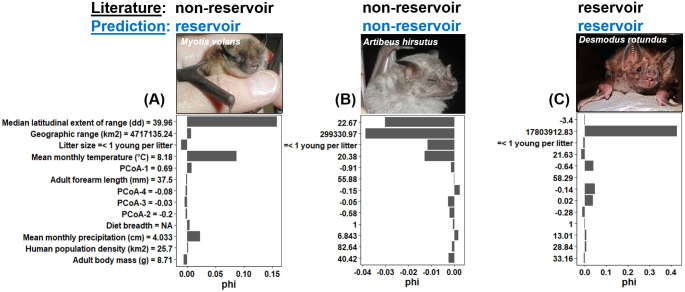Fig 5. Illustrative examples of (A) a predictive reservoir: The long-legged myotis (Myotis volans); (B) a non-reservoir: The hairy fruit-eating bat (Artibeus hirsutus); and (C) a known reservoir: The vampire bat (Desmodus rotundus).
Bars denote trait importance based on the Shapley value (phi). Positive Shapley values indicate that predictors are increasing the likelihood that the outcome is positive (i.e., a species is a reservoir for RABV), and negative Shapley values indicate that predictors are increasing the likelihood that the outcome is negative (i.e., a species is not a reservoir for RABV). Values next to each trait represent the trait measure for each one of the three species (obtained from the PanTHERIA database). All photos were obtained from Wikimedia Commons (https://commons.wikimedia.org/). The text at the top of each image represents the reservoir status of each species based on the literature (black) and GBM models (blue).

